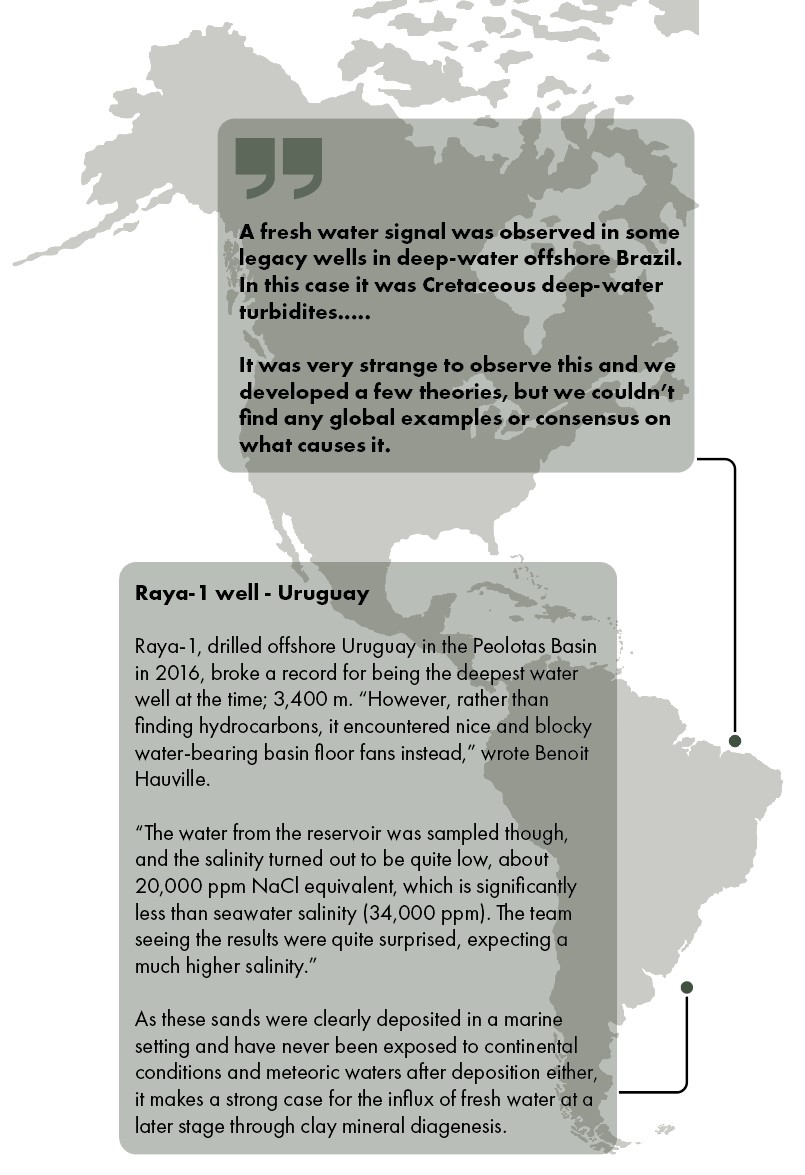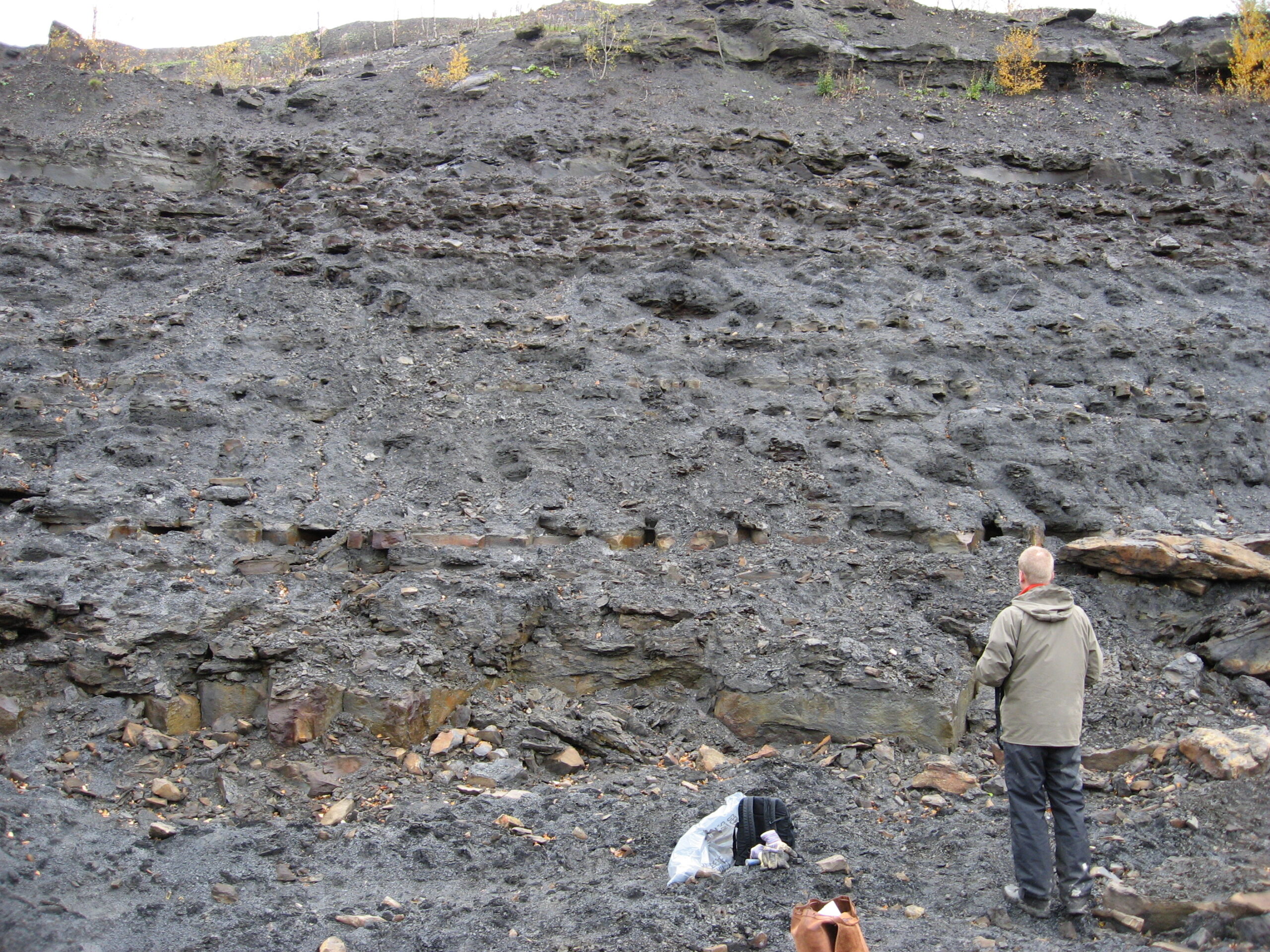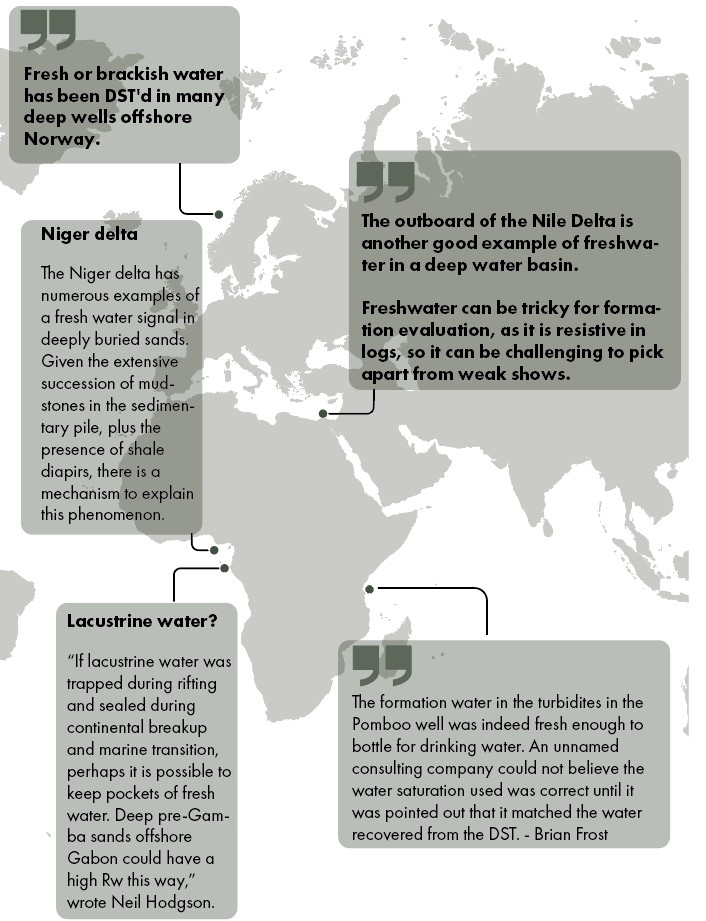“A famous example of anchoring is finding a high resistivity anomaly on a structure in a deep-water turbidite play and assuming it can only be petroleum related,” wrote exploration geologist Brian Frost as a comment to a LinkedIn post last year. He was talking about the Pomboo well, drilled in deep-water Kenya.
“It did not occur to the exploration company in question that deep-water marine turbidites could also contain fresh water,” he continued. “But it is a very common phenomenon in deep-water East Africa and is also known to occur in deep-water turbidite reservoirs in West Africa and the Niger Delta.”
It’s a very common phenomenon in deepwater East Africa and is also known to occur in deepwater turbidite reservoirs in West Africa and the Niger Delta.
Brian Frost
 “Exploration is full of surprises and explorers must always consider what are facts and what are assumptions,” Brian concluded.
“Exploration is full of surprises and explorers must always consider what are facts and what are assumptions,” Brian concluded.
This intriguing observation made me write a short story for the magazine, which was published in Issue 6, 2024. In the article, we only put forward Brian’s observation, and asked our readers if they had seen similar examples.
And so it happened that we received quite a few interesting comments from geologists all over the world, confirming that fresh water, or less saline than expected formation water, is actually more common than some may have thought. It also happens to be a phenomenon that has a fairly straightforward explanation; the dehydration of smectite and the transformation to illite. Eric Gaucher and his colleagues published about it a few years ago.
But even though there is a logical explanation for the presence of fresh water in deep-marine reservoirs, places that have never witnessed any substantial fresh water input at the time of deposition, it seems as if the exploration community is not very well informed about it yet. For some of those who got in touch, the observation of a fresh water signal was as much a surprise as to the people involved in the Pomboo well. In other words, despite the literature on the matter, it does not seem to be common knowledge amongst geologists working in deep-water environments yet.
On that basis, we decided to bring together the observations people shared with us, together with a brief summary of the smectite to illite diagenetic transformation that seems to be at the basis of all this.
The mechanism
It is well-known that fresh water can make it into marine realms, especially when aquifers extend from upland areas where they are filled by rainwater to places below sea level where the hydrostatic head of fresh water pushes the sea water down.
The Lebanese famously used water derived in this way to keep Alexander the Great at bay in the long siege of Tyre 332 BC. It made Alexander so cross that they could drink sea water that he killed them all when the town fell.
But in the cases shown on the previous page, this explanation cannot be used because the places where fresh or less saline water was found were simply too far away from shore or too deep to create a way for meteoric waters to reach the reservoirs. In other words, another explanation is required to explain the phenomena observed.
The interesting thing is that the people who shared their experience were all surprised to see the freshening effect in the wells they looked at, even though in some cases it wasn’t that long ago and publications about it exist. It shows that new insights on burial diagenesis take a while to find its way into the E&P industry, as it is burial diagenesis that seems to be the most logical explanation for the observations made.
It was Eric Gaucher who got in touch to raise awareness of a paper he was involved with on the topic of smectite dehydration and illitisation (Tremosa et al., 2020, Marine and Petroleum Geology). Here are a few useful insights from the publication.

First of all, the release of fresh water through dehydration of smectite and the formation of illite are closely linked to the formation of overpressure. And it is not only the release of water causing this, it is also the formation of quartz in the illitisation process that causes an increase in overall rock volume, contributing to the overpressure generation.
The team of researchers Eric Gaucher was part of investigated and modelled these transformations for the Niger Delta, which is well-known for its thick succesions of mudstones. They found that dehydration of smectite is a much more important contributor to the formation of water than the smectite to illite transformation.
Together, both these process can account for about 30 % of the observed overpressure, the authors found.
Migration
Now that a candidate for the generation of fresh water in the subsurface has been identied, there still needs to be a way to get it from the mudstone successions into the overlying or adjacent reservoir sands.
Juan Soto, a researcher from the University of Granada in Spain who has published extensively on this topic, has shared some thoughts with us on this.
He describes two possible ways for water generated in mudstones to make its way into neighbouring sands; through the loss of cohesion and the subsequent development of mud diapirs, or through the development of micro fractures in the mudstones through which the water can migrate.
Wait a minute
 But is there another way of forming fresh water in the burial process? John Cater from Petrostrat got in touch and highlighted a phenomenon that can equally result in the formation of fresh water, at slightly shallower depths than the dehydration of smectite and the formation of illite, which takes place at depths between around 2 to 4 km.
But is there another way of forming fresh water in the burial process? John Cater from Petrostrat got in touch and highlighted a phenomenon that can equally result in the formation of fresh water, at slightly shallower depths than the dehydration of smectite and the formation of illite, which takes place at depths between around 2 to 4 km.
“Fresh water is also expelled from siliceous sediments during the Opal A/Opal-CT transformation. That occurs at about 1500 m burial depth around a temperature of 50° C and will result in fresh water flow through interbedded sands.”
John says this mechanism has been proposed to explain the mobilisation and injection of sands, resulting in the formation of sand injectite reservoirs. “I don’t know the percentage change of volume, i.e. the amount of water liberated, but it is a serious contender for causing injectite formation in Palaeocene-Eocene strata in the North Sea area,” he writes.
This is an interesting observation; could it be that in the shallow domain where the Opal A/CT transformation takes place, it is the sands that tend to become more mobile, whilst deeper down, where smectite dehydration and illitisation dominate, it is the mudstones that are more prone to becoming mobile?
I want to thank all the people who shared their insights with our followers on LinkedIn, and with me personally via email. It is fascinating to see how the subsurface can throw surprises at explorers, and how explorers therefore have to keep exploring to find explanations for newly observed phenomena. Maybe one day, when we have depleted our fresh water groundwater resources, there will be another well drilled on Pomboo to produce the ready-to-be-bottled water. From a deep marine sandstone.



